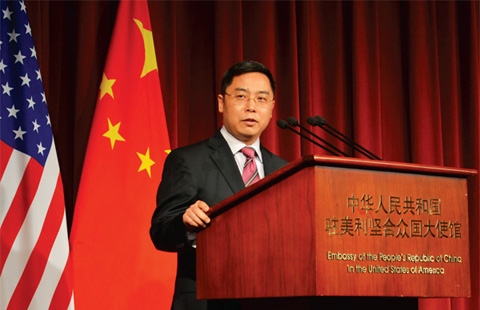9.42 million students sit national college entrance exam
Updated: 2015-06-07 07:24
(Xinhua)
|
||||||||
It is the same in Beijing, which is generally considered to have the best universities in China.
The quotas for Beijing students who take the Gaokao was cut to 52,200 in 2014, down 30 percent from 76,700 in 2008.
Unfortunately, the move did not ease vacancies in university recruitment.
Statistics show second-class universities or colleges failed to get full enrollment among high school graduates in Beijing for four straight years, since 2010. Chinese universities are classified on different levels based on their overall strength.
"Chinese universities are undergoing a serious survival crisis, " said Chen Zhiwen, editor in chief of China Education online.
HOMOGENOUS EDUCATION LOSING ATTRACTION
Getting into college does not guarantee a good job upon graduation. This year, nearly 7.5 million students who succeeded at the Gaokao four years ago are still looking for jobs in the toughest job market ever.
Critics say a large number of Chinese universities have been racing to expand their scale by establishing as many majors as they can. Unfortunately, homogenous education intensifies the difficulties in job hunting among college graduates.
"The crisis of recruitment, seemingly an employment problem, is indeed a crisis of declining education quality," Chen warned.
According to the Ministry of Education, Chinese universities added 1,681 majors in 2014, most of which overlapped other majors.
Among them, Internet of Things Engineering was the most popular, with 54 universities or colleges adding the specialty which has already opened in 250 schools.
But even with an excess of trendy new majors, graduates in traditional areas are experiencing difficulties in employment.
- Rescuers enter Eastern Star hull in search efforts
- China mourns Yangtze shipwreck victims as search continues
- 9.42 million students sit national college entrance exam
- Students prepare to take national college entrance exams
- TV giants suspend shows for ship wreck mourning
- China, Japan reopen finance talks after delay over sour relations
- Turks vote in election set to shape Erdogan's legacy
- Protesters block road to G7 summit site
- India, Bangladesh sign historic land boundary agreement
- Putin says no need for West to fear Russia
- MERS cases rise to 50 in S.Korea with 9 more infections
- Eleven hikers killed in Malaysia quake, eight still missing

 Rescuers mourn victims on seventh day since Eastern Star disaster
Rescuers mourn victims on seventh day since Eastern Star disaster
 Rescuers enter Eastern Star hull in search efforts
Rescuers enter Eastern Star hull in search efforts
 Gaokao held across China
Gaokao held across China
 Man sues actress for staring at him
Man sues actress for staring at him
 Students prepare to take national college entrance exams
Students prepare to take national college entrance exams
 Across America (May 29- June 4)
Across America (May 29- June 4)
 Operation underway to turn the ship over
Operation underway to turn the ship over
 Prayers held for ship passengers
Prayers held for ship passengers
Most Viewed
Editor's Picks

|

|

|

|

|

|
Today's Top News
China mourns Yangtze shipwreck victims as search continues
China signs $50m agreement with FAO to support developing countries
9.42 million students sit national college entrance exam
Death toll jumps to 396
as hopes of finding any
survivor in cruise fade
China, Japan reopen finance talks after delay over sour relations
Hacking claim isn't responsible, Beijing says
Startups return to China to battle pollution
Rescuers right ship to
speed up recovery
US Weekly

|

|







